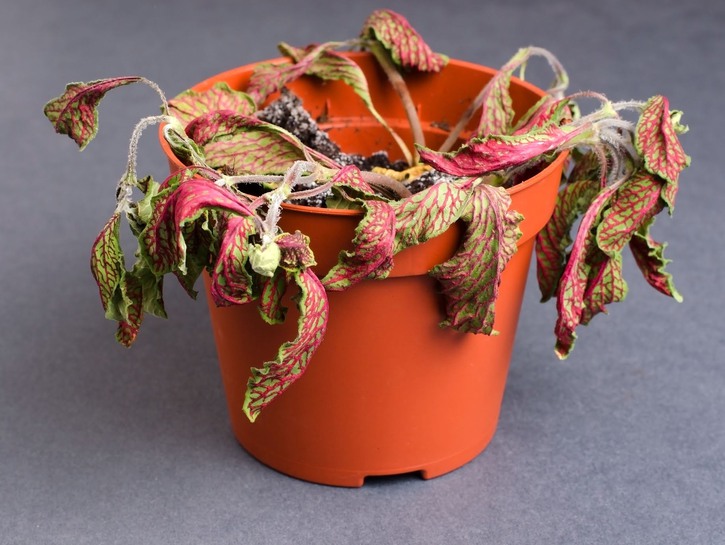Nothing says home sweet home like a houseplant. Except maybe a dog or an aptly worded welcome mat. But if that houseplant has withered brown leaves, it detracts from that welcoming feeling.
Potted plants are more than just decorative and homey. There is even research that suggests they have a positive effect on both our physical and psychological well being. So it behooves us to take care of them and treat them right.
If you want to learn how to keep your houseplants healthy, happy, and green, read on for Oola’s easy, actionable tips. We’ll turn you into a green-thumbed expert in no time.
The Causes Of Brown Leaves On Houseplants

1. Some Changes To Your Plants Leaves Are Healthy
Even healthy plants have shed brown leaves on occasion, just like trees do. Unlike trees, however, they don’t turn to lovely shades of red, gold and orange before they do so. This can make it difficult to understand what’s going on.
If your plant sheds a few leaves, while the rest remains healthy, moist and green, chances are there’s nothing to be concerned about. It’s just a normal stage of growth.
2. Be On The Lookout For Isolated Color Changes
If your potted plant is changing to colors like brown and yellow in specific sections, uneven exposure to light is probably to blame. If, for instance, the bottom of the plant is changing color but the top is healthy and green, it probably means the bottom portion of the plant isn’t getting enough natural light. Moving it to a new location or raising it up should do the trick.
For similar reasons, you should rotate your plant on a regular basis so every side receives equal love from your light source.
3. Take Note If your Plant Wilts, Then Turns Brown
If your plant looks listless and wilted before it turns brown, the likely culprit is lack of water. Luckily this is an easy problem to fix. Simply start watering it more often, making adjustments as you monitor its return to health.

4. What It Means When Your Plant Leaves Are Yellow
If the leaves of your plant turn yellow and drop without turning brown, a lack of nutrition is the probable reason. Plant food is the answer. You can buy it at the store, or make your own in an empty bottle. You’ll need:
- ¾ teaspoons Epsom Salt
- ¼ teaspoon household ammonia
- ½ gallon water
Mix well and use in lieu of water once a month.
5. Just The Tips Of The Leaves Are Brown
If the tips of your plant’s leaves are turning brown, but the interior of the leaf is still a vibrant green, a lack of moisture is probably the key. Many houseplants, particularly those varieties native to tropical environments need to receive moisture from the air as well as their soil. If your house is too arid, they’ll suffer without intervention.
One solution is moving the plant into a room with more humidity, such as a bathroom. Or, you can simply give it a good mist of water from spray bottle from time to time.
6. The Tips And Edges Are Brown
If your plant’s leaves are brown on both the tips and the sides, over fertilization is probably a factor. A little bit of plant food is good, but overfeeding them is not. In general, you shouldn’t have to give your plant food or fertilizer more than once a month. If you do, it may cause damage to the roots and make it difficult for your plant to get enough water to thrive.

7. What To Do If Your Houseplant’s Leaves Are Brown And Crispy
It’s not a good sign if your plant’s leaves are crispy, brown, and curled. This is your plant’s way of sending you a message that it’s getting too hot. This is quite common when a plant is placed too close to a fireplace, heater or even a window on hot summer days. Move it someplace cooler and nurse it back to health.
8. Your Plant Might Have Bugs
Make sure to take a good look at your potted plant on a regular basis to make sure the leaves, stems, and soil aren’t infected with insects. Many varieties of bugs will damage your plant and turn its leaves yellow and brown.
If your plant is infested, kill the insects and repot the plant in fresh soil. Keep a close watch to make sure the bugs don’t return. You may also need to give it a little bit of extra water as it begins to thrive again.
Plants are our friends. They live in our houses and give us so many benefits. The least we can do is learn how to take care of them.
